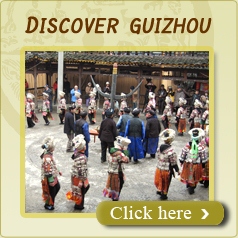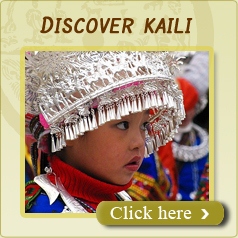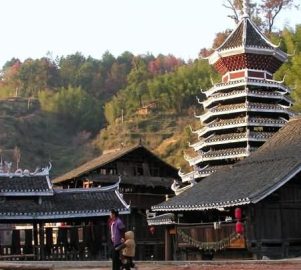Basha Village

Basha is a very special Miao ethnic village, its long history can be traced back 2,200 years ago. Now the residents also live in the wooden houses, and practice their unique customs, leding an unique old life. The village is located on the southern border Guizhou that only 5 km away from Congjiang country.
A different type of Miao Ethnic
Basha Village is made up of 5 natural villages inhabited by more than 2,000 people in 350 households. With quite different in dressing, language and custom than other Miao ethnic that you have seen in Guizhou, they are more like a tribe and seldom contact with the outside world.
Life of Hunters
They lead a self-sufficient life in the hilly areas, and is tinted with its time-honored Miao traditions and a strong local flavor. Basha might be the only village authorized by the government to keep guns in Guizhou, many Basha men are good hunters. The local Miao men are experts of hunting wild animals, such as wild pigs, rabbits and birds.
Basha men usually look like the ancient warriors, for they usually carry hunting guns on their shoulders and gunpowder bags, bullet bags and knives around their waists.

Clothes of Basha
The traditional clothes of Basha residents with a special bluish purple color. They usually add egg white into the indigo when dying the coarse cloth, making it shiny and waterproof.
Basha women's clothes are especially beautiful, which are decorated with old-fashioned and colorful embroideries and supplemented with the charm of silver chaplets and bracelets. Basha women are very good at making batik and embroidery, planting cotton and making clothes for their families.
Hairs of Basha
Basha men put great emphasis on their hair bun, for it represents masculinity. They grow a long section of hair from the middle of the tops of their heads, and keep coiled in a bun. The rest of the hair is shaved off with a sickle. According to the relevent records that Basha men have kept this unique hair style for thousands of years, so Basha men are also known as "the living terra cotta warriors".
In Basha, even little boys realize that the hair bun is a symbol of being a man as well as power. Between the age of 7 and 15, all the boys have to attened a shaving ceremony. The tribe leader usually wets a sickle with the water that is uesed to boil eggs, and shaves off all the hair except the central part, the left hair is coiled into a bun. When boys are given hunting rifles at the age of 15 that means they have become adults.
Must-see Villages in Guizhou and Guangxi
Basha Zhaoxing Tang'An Xijiang Sanjiang Longsheng
Frequently asked questions in Guizhou





